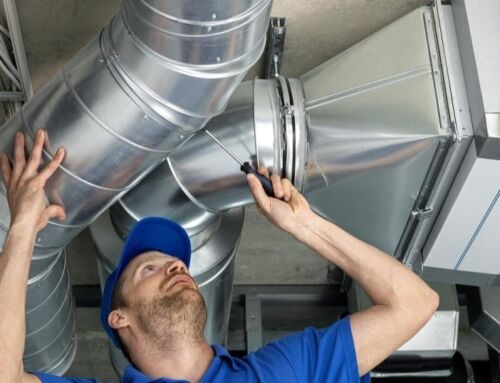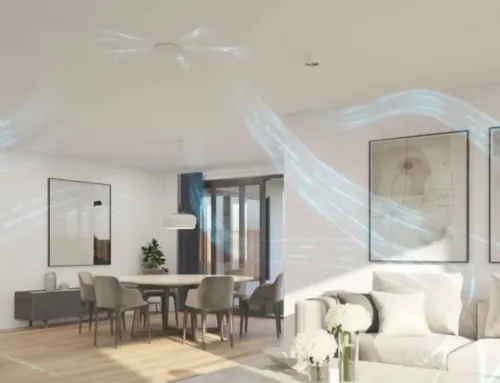When it comes to buying, installing and repairing an air conditioner, there is some air conditioning glossary that you may hear cropping up again and again. While you don’t really need to understand many of the glossary, it would help to know a few so that you can make more informed decisions.
AC is an essential component of modern living, providing much-needed relief from hot and humid weather. However, for those unfamiliar with the air conditioning glossary used in the industry, the world of air conditioning glossary can be confusing and overwhelming.
From BTUs to SEER ratings and HVAC systems, the air conditioning glossary can seem like a foreign language. In this article, we aim to simplify the language of AC by providing an air conditioning glossary of common terms and definitions.
We will explore some of the most frequently used air conditioning glossary in the industry, from the basics of AC systems to more advanced concepts. By understanding the air conditioning glossary, you will be better equipped to make informed decisions about your needs, communicate effectively with contractors and technicians, and ensure that you get the most out of your AC system.
Whether you’re a homeowner, business owner, or an AC enthusiast, this article is an essential resource for anyone looking to demystify the world of air conditioning glossary.
Air conditioning glossary of trade-specific terms you should know
AIR CON FILTER: Filters are an important component of your AC system. They are usually made of a fine material like pleated paper or cloth stretched across a sturdy frame. Their function is to filter the air that passes in and out of your HVAC system. They collect small particles of contaminants that may affect the health and wellbeing of you, your family or your employees, including dust, dirt, pollen, mould, lint and other fibres, bacteria, hair or animal fur, and particles of wood, metal or plastics.
ARC: This is the Australian Refrigeration Council, the ‘peak industry body’ for refrigeration and air con. They provide leadership and knowledge to the climate control industry through licensing and regulatory assistance, technical advice, promoting training quality, connecting customers to ARC-licensed businesses and providing free promotional materials for ARC-licensed businesses.
ARCTICK: The ARCTICK license must be held by any person who carries out work in relation to refrigeration and air con (RAC) equipment. Handling fluorocarbon refrigerant without a Refrigerant Handling Licence is an offence. You should only hire an AC specialist with an ARCTICK license.
COMMISSIONING: Air con commissioning is the process of inspecting a new unit after installation, making sure it is running perfectly.
DUCT: Ducts are the passages used in heating, ventilation, and air con that deliver and remove air. They are used in ducted systems.
DUCTED SYSTEM: Ducted air conditioners are installed internally, often within the roof. From a central unit, a series of ducts will cool or heat individual rooms. This type of air conditioner will require a certain amount of cavity space for installation, so may not be suited to every home. They are more suitable for commercial or industrial facilities.
INDOOR UNIT: The indoor unit is located inside. It is the part that blows hot or cold air into a room. It contains the heat exchange coil, filters, remote receiver and fan.
HEATING OR COOLING CAPACITY: This is the amount of heating/cooling the unit can produce.
HVAC: This stands for heating, ventilating, and air con – a trio of functions that, as a whole, control thermal comfort and air quality in a building. It is basically a blanket term encapsulating everything from a split AC unit for a house, to a large ducted air con and ventilation system for an industrial complex or skyscraper.
MULTI-SPLIT SYSTEM: This system comprises of one outdoor unit which is connected to multiple indoor units. There are numerous benefits to a multi-split air con unit. They are extremely efficient and capable of powering up to six interior rooms at once. With this system, each indoor unit can be controlled individually. This means that specific rooms can be set at different temperatures, all from a remote.
OUTDOOR UNIT: The outdoor unit is the external part of the AC system, which contains the compressor, fan, and heat exchange coil, and pumps refrigerant to and from the indoor unit where it is heated and cooled.
REFRIGERANT: Refrigerant is the substance that ‘conditions’ the air it blows. Without refrigerant, air conditioners, fridges or freezers wouldn’t exist. It is a compound, either fluid or gas, that, when combined with components like components such as compressors and evaporators, create hot and cold air.
Some kinds of refrigerants are outdated, such as R12 or R22. These substances are older and are known to contribute to the greenhouse gas effect. The R22 started being phased out in 2010 and R12 was phased out in the 1990s. Hydrofluorocarbons (HFCs) like R410A and R134 are the standard today.
REGASSING: Although relatively uncommon, regassing is one of the key processes involved with air con maintenance and repairs. If installed correctly, an air con unit should not usually have to be regassed. However, older units, or those that weren’t installed by a professional installer, may need to be assessed and serviced. This involves checking for refrigerant leaks, fixing a leak if present, and replacing refrigerant if required.
SPLIT SYSTEM: Split systems are very popular in homes all sizes. This type of air con refers to a system where the condenser is fixed externally outside the home and the head unit is fixed inside the home.
THERMOSTAT: The device that controls the climate of a room by relaying information to the AC unit.
ZONING: The process of controlling the climate of separate rooms in a building. Older air conditioners could only be set to a single temperature. However, modern technology allows us to now control the temperature in separate rooms with a single unit.
Get in Touch With Us Today
We hope that this air conditioning glossary has provided you with a clearer understanding of the terminology used in the industry. By familiarizing yourself with these terms, you will be better equipped to communicate effectively with contractors, technicians, and other professionals in the field.
You will also be better equipped to make informed decisions about your needs and ensure that you get the most out of your system. Remember, air con technology is constantly evolving, and new terms and concepts are emerging all the time.
However, with the knowledge gained from this glossary, you will be better positioned to stay up-to-date and informed about the latest developments in the industry.
Looking for an air con installation specialist in Sydney? Give us a call today. With over 9 years experience under our belt, we pride ourselves on providing fast and efficient service of the highest quality.







